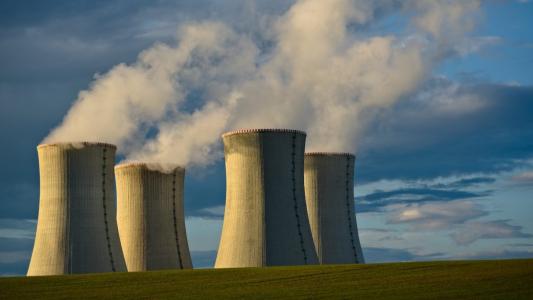Nuclear power giant Westinghouse Electric Company has unveiled a design for a small nuclear reactor — and it has good reason to believe regulators are going to give it the greenlight.
The challenge: Nuclear power is obtained by splitting atoms in a reactor and then using the heat to generate electricity — this is cleaner than burning fossil fuels and more reliable and compact than wind or solar power.
Despite those benefits, though, only 10% of the world’s electricity comes from nuclear, and the power source is on the decline, with aging plants closing faster than new ones are being built.
Changing public attitudes about the safety of nuclear power are one reason for this decline, and the falling cost of renewables is another, but perhaps the biggest reason is that building new plants, like the ones that are closing, is a hugely expensive, time-consuming undertaking.
Westinghouse’s small nuclear reactor could power about 300,000 US homes.
The idea: Many energy experts see small nuclear reactors as the answer to this problem.
While these can’t generate as much electricity as our existing nuclear power plants, they could be built in factories and then assembled on site, potentially cutting costs and construction times. Their smaller size, meanwhile, helps reduce safety risks and allows us to build them in more places.
The US Nuclear Regulatory Commission (NRC) only just certified its first small nuclear reactor in January 2023, but dozens of others are in development, and Westinghouse’s AP300 is the latest to join their ranks.
Smaller, faster, cheaper: With a capacity of 300 MWe, the AP300 is large enough to power about 300,000 US homes, but its footprint is small enough to fit on 25% of a soccer pitch. If certified, Westinghouse expects the reactor to take just 3 years to build at a cost of $1 billion.
For comparison, a standard nuclear power plant has slightly more than three times the capacity, but can require one square mile of land.
Typical plant construction can take 7 years at a cost of $10 billion, and that’s if everything goes well — the only nuclear reactors under construction in the US were supposed to cost $14 billion and be operational by 2016, but the budget has ballooned to more than $30 billion, and the two reactors still aren’t quite ready for commercial use.
“The NRC has already licensed every bit of this technology.”
David Durham
Looking ahead: Westinghouse has already begun submitting the paperwork to get the design of its small nuclear reactor certified. It expects to secure approval by 2027, and if that pans out, the first AP300 could start supplying electricity to the grid in 2033.
Westinghouse may have a better shot than other developers at getting its design certified, too, as the system is essentially a scaled-down version of its AP1000, a reactor that has been in operation for nearly two decades.
“We have absolute confidence, because the NRC has already licensed every bit of this technology,” David Durham, president of energy systems at Westinghouse, told CNBC. “This is all the same exact thing.”
We’d love to hear from you! If you have a comment about this article or if you have a tip for a future Freethink story, please email us at [email protected].






